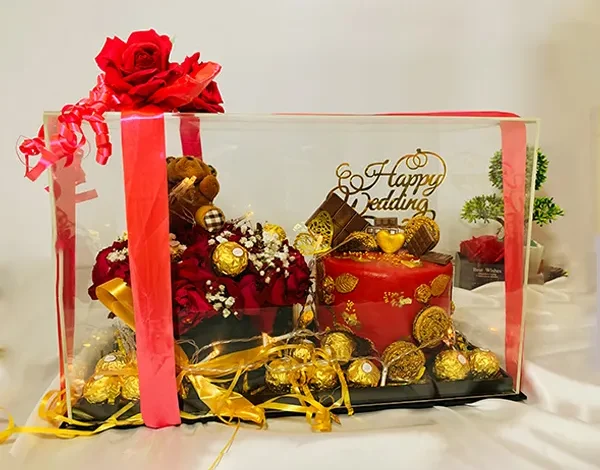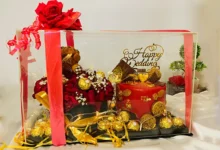The Ultimate Guide to Cake Boxes Functions or Types and Best Practices

Introduction to Cake Boxes
Cake boxes are indispensable tools in baking. They serve as protective and aesthetic solutions for safely transporting and storing cakes. These boxes are designed to shield delicate Protect cakes from external harm, ensuring they reach their destination in perfect form. Whether used by professional bakers or home enthusiasts, cake boxes play a crucial role in maintaining the integrity and freshness of the cakes they encase.
The primary function of a cake box is to offer protection. Cakes are often fragile, with intricate decorations and layers that can easily be disturbed during transit. A sturdy cake box safeguards against physical impacts, jostling, and environmental factors such as temperature fluctuations and humidity. This protection is vital for preserving the aesthetic appeal and taste of the cake, which is paramount for customer satisfaction.
In addition to their protective qualities, cake boxes also enhance the presentation of the cake. A well-designed box can add a touch of elegance and professionalism, making the cake look more appealing and desirable. This is particularly important in settings such as bakeries, where the visual appeal of a cake can significantly influence purchasing decisions. Furthermore, for special events like weddings and birthdays, a beautiful cake box contributes to the overall theme and atmosphere, adding to the celebration’s charm.
Cake boxes are utilized in various settings, from commercial bakeries and home kitchens to event venues. Each setting may require different types of cake boxes to meet specific needs. For instance, a bakery might need bulk quantities of standardized boxes, while an individual might seek a custom-designed box for a unique occasion. Understanding the specific requirements of different cakes and events is essential in selecting the appropriate cake box, whether for a multi-tiered wedding cake, a delicate mousse cake, or a simple homemade treat.
The importance of choosing the correct cake box cannot be overstated. It ensures that cakes are protected, preserved, and presented in the best possible way, significantly impacting both the baker’s and the consumer’s experience.
Types of Cake Boxes
Understanding the different types available on the market is crucial when selecting the ideal cake box. Cake boxes can be categorized based on material, design, and specific uses, each offering unique advantages and potential drawbacks.
Material-Based Cake Boxes
The most common materials for cake boxes include cardboard, plastic, and eco-friendly options. Cardboard cake boxes are famous for their affordability and ease of customization. They are lightweight and available in various sizes but might offer different durability than other materials. Plastic cake boxes, on the other hand, provide superior protection and often feature transparent designs that showcase the cake inside. However, they are less environmentally beneficial than cardboard. Eco-friendly cake boxes, made from recyclable or biodegradable materials, address environmental concerns but can be more expensive.
Design-Based Cake Boxes
Design variations in cake boxes include windowed, plain, and decorated options. Windowed cake boxes feature a clear plastic window that allows a view of the cake without opening the box, making them perfect for display. Plain cake boxes are simple and often used for transport rather than presentation. Decorated cake boxes come with printed designs or embellishments, adding a touch of elegance and making them suitable for special occasions.
Use-Specific Cake Boxes
Cake boxes can also be specialized based on their use. Tiered cake boxes are designed to hold multi-layered cakes securely, with reinforced structures to prevent collapse. Cupcake holders feature compartments to keep individual cupcakes in place, preventing them from toppling during transport. There are also specific designs for cake slices, ensuring that single servings remain intact and presentable.
Popular Brands and Innovations
Several brands stand out in the cake box industry. Wilton, for example, is renowned for its range of high-quality cake boxes, particularly their windowed designs. Another notable brand is BRP Box Shop, which offers eco-friendly options. Innovations in cake box design include collapsible boxes for easy storage and biodegradable materials that minimize environmental impact.
Choosing the correct cake box depends on your needs, whether material preference, design aesthetics, or particular use. By understanding these various types, you can ensure that your cakes are transported and presented best.
Choosing the Right Cake Box
Selecting the appropriate cake box is essential to ensure your cake arrives in perfect condition and makes the desired impression. While selecting a cake box, several crucial variables include the cake’s size and shape, the type of event, and transportation requirements.
Firstly, accurately measuring your cake is crucial. Use a ruler or measuring tape to determine the cake’s diameter, height, and width. This will help you choose a box that fits snugly without being too tight, which can damage the cake, or too loose, which can cause it to shift during transport. Many cake boxes come with adjustable inserts for different sizes, providing additional stability during transit.
The type of event also plays a significant role in your choice. For example, a wedding cake may require a more elegant and sturdy box, often with window panels to showcase the cake’s design. Conversely, a cake for a casual gathering may be well-suited to a more straightforward, more economical option. Matching the box design to the event theme can enhance the overall aesthetic appeal, making a positive impression on guests.
Transportation is another critical consideration. If the cake needs to be transported long distances, opt for a box made from durable materials that can withstand movement. Features like reinforced corners and handles can provide additional support and ease of transport.
Expert opinions from professional bakers also underscore the importance of considering these factors. Experienced bakers often recommend using cake boxes with internal supports for tiered cakes, as these help maintain the cake’s integrity during delivery. Some bakers prefer eco-friendly options, highlighting the increasing demand for sustainable packaging solutions.
Budget considerations are also important. While premium cake boxes with extra features can be more expensive, they offer better protection and presentation, often justifying the additional cost. Conversely, more affordable options for less critical situations can provide adequate protection without compromising quality.
In summary, choosing the correct cake box involves balancing various factors, from size and design to transportation and cost. By taking a thoughtful approach and considering expert recommendations, you can ensure that your cake arrives safely and impresses with its presentation.
Best Practices for Using and Storing Cake Boxes
Using cake boxes effectively can ensure that your cakes remain safe and fresh during transport and storage. Here are a few excellent practices to follow:
Assembling Cake Boxes
Assembling cake boxes correctly is crucial for their functionality. Start by carefully folding along the pre-scored lines of the box. Ensure all flaps are correctly aligned and secure the tabs into the designated slots. Use adhesive tape at the seams for additional stability, especially with heavier cakes. If the box includes a window, ensure it is securely fastened to prevent exposure to external elements.
Securing Cakes During Transport
Securing the cake inside the box is essential to prevent movement and potential damage. Place a non-slip mat or a piece of non-stick shelf liner at the bottom of the box. This will help keep the cake board in place. When transporting tiered cakes, use dowels or straws for internal support and ensure the cake is chilled before transport to minimize any shifting.
Storage Solutions for Cake Boxes
Proper storage of cake boxes, mainly when purchased in bulk, can maintain their structural integrity. Store them in a dry, relaxed environment to prevent warping or moisture damage. Avoid putting heavy objects on top of stored boxes to prevent crushing. Airtight containers or plastic wraps can protect the boxes from dust and humidity.
Common Mistakes and Troubleshooting
Avoid common mistakes such as overfilling the box, which can cause it to collapse, or using an undersized box, which can lead to damage during transport. If a box does collapse, reinforce the sides with additional tape and double-check the weight limit for future use. Damaged cakes can often be avoided by ensuring the cake and box are appropriately sized, correctly assembled, and secured.
Recycling and Repurposing
To minimize waste, consider recycling or repurposing cake boxes. Most cardboard boxes are recyclable – check local recycling guidelines to confirm. Repurposing boxes for storage or crafting projects is another sustainable option. Encourage customers to return boxes for reuse or offer incentives for recycling.
By following these best practices, you can ensure that your cakes remain pristine and your cake boxes durable while contributing to environmental sustainability.

